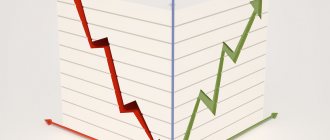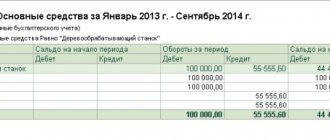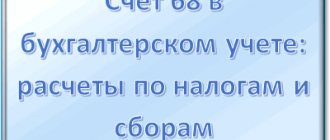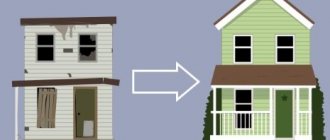Fixed assets received by the company are taken into account at their original cost, but throughout their entire service life, the initial valuation may change. Changes in their prices occur both “plus” and “minus”, and the reasons for this may be different.
From what amount can OS be
Changes made to the Tax Code since the beginning of last year interpret restrictions on the cost of operating systems as follows:
- All properties of fixed assets, including depreciation, are possessed by objects valued at more than 100,000 rubles. Taking into account the presence of other signs of OS in them.
- If the evaluation criteria are in the range from 40,000 to 100,000 rubles, then this object can be classified as fixed assets with subsequent write-off of its value in the form of depreciation only in accounting. In tax accounting, depreciation is not provided for it, and the cost is written off on the day of commissioning.
- Objects that have signs of fixed assets, but with an initial valuation of less than 40,000 rubles, are classified as inventories of a material and technical nature in accounting.
- Fixed assets involved in operation, but having a cost of less than 3,000 rubles, are accounted for in account No. 21. Their internal movements are reflected in off-balance sheet accounts.
The application of Article 340 “Increase in the cost of inventories” is described in this video:
Online depreciation calculator using the declining balance method
Accounting for fixed assets All methods for calculating depreciation of fixed assets are divided into linear and non-linear. We discussed in detail the linear method of calculating depreciation in this article. Here we will dwell in detail on the nonlinear calculation method - the reducing balance method.
Using this method, accelerated depreciation of fixed assets is carried out. Why is this payment method convenient? In what cases is it more profitable to use it? Below is an example of calculating depreciation charges using the accelerated method.
In contrast to the linear calculation method, to calculate depreciation using the reducing balance method, the residual value of the object is taken. The residual value is calculated by subtracting the accrued depreciation from the original (or replacement) cost of the object.
That is, the residual value is equal to the difference between the debit of account 01 and the credit of account 02.
Calculate depreciation online using the declining balance method
The calculation is carried out on the basis of a natural indicator (for example, machine-hour of equipment operation).
- Reducing balance method. The amount for each period is equal to the final cost multiplied by a certain percentage. Depreciation is charged annually at the beginning of the period.
- Write-off of cost based on the number of years of service life.
- In accordance with the law, enterprises can independently choose the method of accounting for depreciation. The linear method is considered the simplest.
PBU 14/2007): AM = OM * K / SPIO where OM is the residual value of the intangible asset at the beginning of the month; K – coefficient not higher than 3, established by the organization; SPIO – useful life remaining at the beginning of the month for which depreciation is calculated.
Calculator for calculating depreciation of fixed assets
- The cost of an asset at the beginning of the year.
- Useful life of an OS object.
- Acceleration factor.
Calculation of depreciation using the reducing balance method - example Let's assume that the organization decided to apply an acceleration factor of 1.8 to the machine from the first example, the initial cost is 423,000 rubles, and the useful life is 8 years.
The annual depreciation percentage, as calculated above, is 100%: 8 = 12.5%. We make an adjustment for the acceleration factor - 12.5% * 1.8 = 22.5%.
Therefore, in the future we will calculate monthly depreciation by dividing the residual value by 12.Ezhem. A. = 25920 / 12 = 2160. As a result of these calculations, the value of the fixed asset object will be completely written off, the residual value will be equal to 0, the object can be written off from account 01.
Let's look at an example of how to calculate depreciation using the reducing balance method. Initial data: - amount spent on the acquisition of fixed assets - 50,000 rubles; - useful life - 5 years; - acceleration factor established by accounting - 2.
You can calculate the amount of depreciation in two ways: using the monthly rate (convert the service life into months) or by calculating the annual rate and then dividing the resulting amount by 12.
Depreciation is calculated separately for each item of depreciable property. Depreciation for an item of depreciable property begins on the 1st day of the month following the month in which this item was put into operation.
Accrual of depreciation on depreciable property in the form of capital investments in leased fixed assets, which in accordance with this chapter is subject to depreciation, begins for the lessor from the 1st day of the month following the month in which this property was put into operation, but not earlier month in which the lessor reimbursed the lessee for the cost of the specified capital investments, for the lessee - from the 1st day of the month following the month in which this property was put into operation.
https://www.youtube.com/watch?v=SuOtmbNGCgk
Depreciation is calculated separately for each item of depreciable property. Depreciation for an item of depreciable property begins on the 1st day of the month following the month in which this item was put into operation.
How to calculate depreciation: 4 calculation methods The residual value of fixed assets is the difference between the original cost and accrued depreciation.
The general formula for calculating depreciation charges: Cost (initial or residual) * depreciation rate / 100%.
Attention
Therefore, it is this amount that must be subtracted in order to obtain the cost of the machine at the end of the first reporting year: 423,000 – 52,875 = 370,125 rubles. Next, depreciation is calculated based on this figure: 12.5% of RUB 370,125. It applies to property:
Increase in the value of fixed assets
If an existing facility, accounted for as fixed assets, has been refurbished, then the company has the right to revaluate it upward. This is allowed, but not more than once a year. The value of property can be increased if:
- Modernization (partial or complete).
- Retrofitting (equipping with new units or parts).
- Reconstruction.
- Technical update (transition to new technologies).
- Completion.
- Or revaluation for other reasons.
All expenses in this case are entered into account 08, and they must be documented by documents such as:
- Estimated project.
- Work acceptance certificate.
- The act of handing over the object.
- Updated inventory card for the facility.
- Order from the manager regarding the work completed and the facility being put into operation.
The video below will tell you how to keep records of non-current and low-value assets in 1C:
Methods of depreciation of fixed assets and intangible assets
In accounting under the general taxation system, there are only four transfer options. Linearly, according to the value of the sum of the numbers of years of the period of useful use, in proportion to the volume of the produced product and depreciation using the reducing balance method. An example of the simplest enumeration option is linear, which is why this method is used more often than others. The company must choose one of the transfer methods and confirm this choice by fixing it in its accounting policies. In the future, transfers will be made only according to one selected option. The frequency of transfers is strictly regulated and equals one month.
If under the general taxation system the periods for transferring depreciation are determined by current legislation, then under a special regime the company can choose the time of transfer. The option that answers the question of how to calculate depreciation under a special regime is very simple. The value of the price of the purchased object is divided into equal shares into three, two or one quarter. The entire value of the purchase is redeemed within a year. If the object was purchased in the first quarter (quarter) of the year, then the price value is distributed over the next three quarters. If the purchase was made in the second quarter, then for the next two. If the company purchased an asset at the end of the year, the entire purchase amount can be repaid at once. As can be seen from what was written above, there are no options or special formulas for calculating depreciation under a special regime.
Reduction and markdown
Since the depreciation period for fixed assets can be long, their market value may also change during this period. In such cases, they are re-evaluated. Revaluation of an object with a decrease in its value is called markdown. Markdown purposes:
- Determination of the real value of the object, valid on the market at the moment.
- Analysis of the effectiveness of using the OS.
- Tax reduction.
OS valuation can be carried out in one of two ways:
- Direct recalculation in accordance with their real value.
- Indexed according to the degree of wear.
Accounting records reflect both a decrease in the value of the object and a decrease in its depreciation.
How to reduce depreciation charges on fixed assets
As you know, since 2013, companies using the simplified tax system are required to keep accounting records and submit financial statements at the end of the year. In this regard, companies may encounter some difficulties in reporting financial results because they may turn out to be negative. The cause of the loss may be depreciation charges on fixed assets, because The procedure for accounting for fixed assets for companies using the simplified tax system differs in tax and accounting. Let's look at the situation in more detail.
Unprofitable equipment
is on a simplified taxation system with the object “income reduced by the amount of expenses”, and is engaged in the acquisition of refrigeration equipment with its subsequent rental. All equipment is accounted for on the company's balance sheet. As you know, expenses for the purchase of equipment are taken into tax accounting in equal shares throughout the year. In accounting, property is depreciated monthly over its entire life. In this case, the amount of depreciation of fixed assets exceeds the income received by the company in the course of its activities. Accordingly, there is a risk that the company will end the year with an accounting loss, which may serve as a negative factor for obtaining a loan, participating in tenders, etc. Moreover, if the company increases turnover and actively purchases equipment, it may lose the right to apply the simplified tax system, because the residual value of fixed assets may exceed 100 million rubles.
Next, we will consider several ways to reduce depreciation charges on fixed assets:
- Re-evaluate the cost of the operating system downward. It should be borne in mind that if a company has revalued at least once, then it will have to be done regularly at the beginning of the year.
- Carrying out reconstruction or major repairs of the OS. The duration of such work should be more than a year.
- Transfer of equipment for conservation. The conservation period must be at least three months and, accordingly, during the conservation period, this equipment should not be used in production processes.
The last two methods are possible only if fixed assets are temporarily not used by the company in its activities. What to do with those of them that the company initially plans to purchase for subsequent rental?
Impairment of fixed assets
During operation, the costs of maintaining an OS object may exceed the income they generate. That's when the depreciation of fixed assets occurs. Its signs:
- A drop in the market valuation of the property.
- The change in the situation is not for the better for the company.
- Excess of book value over market value.
- Obsolescence or wear and tear of the OS.
- Prolonged non-use of equipment.
- The impending closure of the company.
- The fixed asset is expected to be disposed of.
- Deterioration in the economic results of using this OS.
If an object has one of the signs of depreciation, then it is checked for this item. Its procedure is enshrined in standard IAS 36 “Impairment of Assets” and consists of comparing the carrying amount with the recoverable amount. In this case, the book value should not be higher. The recoverable amount is calculated as the difference between:
- Fair (market value).
- Costs of sale or dismantling with the cost of materials or parts suitable for use.
Another criterion for the effectiveness of a company’s use of fixed assets is turnover and liquidity.
The impairment of fixed assets is described in this video:
Practical use
Let's look at how the reducing balance method works. The initial data is as follows:
- 50 thousand rubles – the amount for the purchase of the OS;
- 5 years – period of useful operation;
- acceleration factor – 2.
The calculation can be carried out using two methods. In the first case, the service period is converted to months immediately. In the second, the annual amount is calculated and then divided by 12. For the calculation, both numbers will be needed. The fact is that depreciation is carried out every month, and to determine the residual value an annual amount is needed. First of all, the norm is calculated. It is 20%/year (100%/5 years) or 1.67%/month. (100%/60 or 20%/12). Taking into account Ku = 2, the wear rate for the year is 40%, and for the month – 3.34%.
Using the reducing balance method, the calculation can be made for each 12 months separately:
- In the first year, the sought value is equal to the original value. Write-off amount: 50 thousand rubles x 40/100 = 20,000 or 1,670 rubles/month.
- In the second year, accrual begins with determining the residual value. It will be 50,000 – 20,000 = 30,000 rubles. Next, using the formula, we get: 30,000 x 40/100 = 120,000 or 1,000 rubles/month.
- For the third year, the calculation is carried out in a similar way. The result is 7200 rubles/year or 600 rubles/month.
- As of January of the next (fourth) year, the balance of the initial costs for the purchase of the operating system is 10,800 rubles. Substituting the values into the formula, we get the amount of 4320 rubles / year or 360 rubles / month.
- At the beginning of the last year, the cost is 10,800 – 4,320 = 6,480 rubles. The resulting figure is 13% of the fixed asset price taken into account when placing the object on the balance sheet. At this stage of the calculation, you should refer to tax regulations. In accordance with Article 259 of the Tax Code, at the moment the book value reaches 20% of the initial value, the calculation method changes. To maintain a monthly repayment schedule for deductions and write off incurred property expenses in full, the balance should be distributed according to the number of months until the end of operation. Thus, 6480 is divided into 12 months. The result is the amount of wear and tear per month for the last year of operation - 540 rubles.
Throughout the entire operational period, the book value of the property is reduced by the depreciation amount. This will continue until it reaches zero. One important point should be noted here: if an enterprise chooses the reducing balance method, it should be used throughout its entire operational life. It is valid from the date of capitalization until the depreciation calculation is completed. The basis for stopping the accrual of depreciation is the full repayment of the price of the property or its removal from the balance sheet. We should not forget that the method chosen by the enterprise must be enshrined in the financial policy.
Liquidity
This is an opportunity to quickly convert the fixed assets on the company’s balance sheet into money. This ability is assessed by liquidity indicators, which include:
- The general coefficient is calculated as follows: the size of current assets / short-term liabilities × 100%. Optimal value: 100 – 200%.
- Absolute coefficient equal to the ratio: cash value of fixed assets/current liabilities×100%. It is recommended to keep it in the region of 10 – 30%.
- Urgent liquidity (20 – 40%): (cash + securities)/short-term liabilities×100%.
- Adjusted ratio : (cash + securities + accounts receivable) / short-term liabilities × 100% within 80 – 100%.
How to calculate depreciation using the reducing balance method?
- First, we need to find out the residual value of our object. To do this, you need to take the initial cost of the equipment and its commissioning and subtract from this the cost paid at the time of calculations.
- Next, we will need a depreciation rate; for this we need to know the service life of the property. It is not difficult to calculate this indicator; we need to take 100% and divide it by the period that the equipment will last in months or years, depending on the type of device.
- The last thing we need in this calculation is the acceleration factor. The company establishes it independently, and therefore records it in documents in the accounting records.








